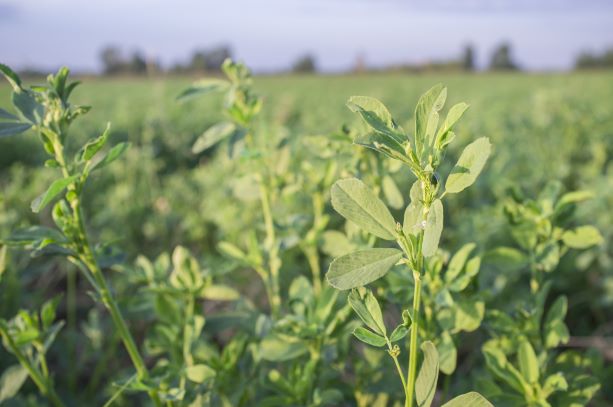The research brought together the complementary expertise from Australian and Argentinian researchers to further investigate ADD and to determine the potential risk ADD could pose to the Australian lucerne industry.
The collaborative team conducted limited, targeted surveys of lucerne crops which showed no evidence of ADD in Australia.
In addition they confirmed there were five viruses associated with ADD including alfalfa dwarf virus (ADV), alfalfa leaf curl virus (ALCV), alfalfa mosaic virus (AMV), bean leaf roll virus (BLRV) and alfalfa enamovirus-1 (AEV-1).
The research also found a co-infection of lucerne with ALCV and AMV appears to be the main cause of the severe alfalfa dwarf disease in Argentina. John Smith, AgriFutures Australia General Manager, Research said despite there being no evidence of ADD in Australia, the risk of accidental introduction remained.
“The implications of an outbreak of ADD would mean higher costs for control of insect vectors; and lower lucerne hay yields and seed quality,” Mr Smith said.
“Timely detection and reporting might ease eradication and reduce the long-term impact of an incursion into Australia.”
The collaborative research funded by AgriFutures Pasture Seeds Program, was conducted by the University of Queensland through the Queensland Alliance for Agriculture and Food Innovation (QAAFI), and the Queensland Department of Agriculture and Fisheries (DAF). It was also guided and supported by Lucerne Australia. This research has contributed significantly to the biosecurity of Queensland’s lucerne hay production and the protection of Australia’s seed export markets.










